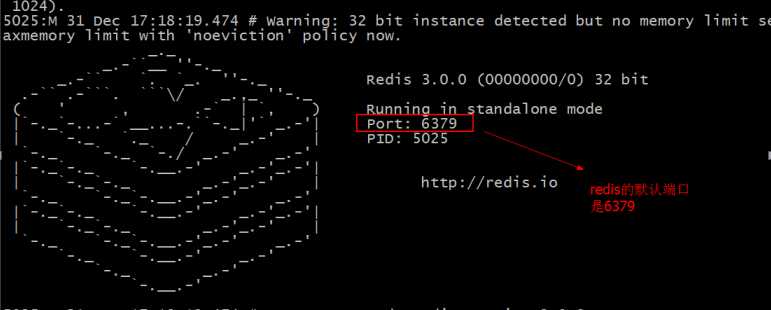标签:tar.gz 字符 color 2.x let bsp 使用 环境 nbsp
NoSql
为了解决高并发、高可用、高可扩展,大数据存储等一系列问题而产生的数据库解决方案,就是NoSql。
NoSql,叫非关系型数据库,它的全名Not only sql。它不能替代关系型数据库,只能作为关系型数据库的一个良好补充。
redis
Redis是使用c语言开发的一个高性能键值数据库。Redis可以通过一些键值类型来存储数据。
键值类型:
String字符类型
map散列类型
list列表类型
set集合类型
sortedset有序集合类型
缓存(数据查询、短连接、新闻内容、商品内容等等)。(最多使用)
分布式集群架构中的session分离。
聊天室的在线好友列表。
任务队列。(秒杀、抢购、12306等等)
官网地址:http://redis.io/
下载地址:http://download.redis.io/releases/redis-3.0.0.tar.gz
redis安装在linux上
Redis是C语言开发,建议在linux上运行,本教程使用Centos6.4作为安装环境。
第一步:安装VMware,并且在VMware中安装centos系统(参考linux教程)。
第二步:将redis的压缩包,上传到linux系统
第三步:对redis的压缩包进行解压缩
Redis解压缩之后的文件是用c语言写的源码文件
tar -zxf redis-3.0.0.tar.gz
第四步:安装c语言环境(安装centos之后,自带c语言环境)
yum install gcc-c++
第五步:编译redis源码
cd redis-3.0.0
make
第六步:安装redis
make install PREFIX=/usr/local/redis19
第七步:查看是否安装成功
前端启动的命令:
./redis-server
前端启动的关闭:
强制关闭:Ctrl+c
./redis-cli shutdown
启动界面:

后端启动
第一步:需要将redis解压之后的源码包中的redis.conf文件拷贝到bin目录下
[root@itheima bin]# cp /root/redis-3.0.0/redis.conf ./
第二步:修改redis.conf文件,将daemonize改为yes
先要使用vim redis.conf

第三步:使用命令后端启动redis
[root@itheima bin]# ./redis-server redis.conf
第四步:查看是否启动成功

强制关闭:kill -9 5071
正常关闭: ./redis-cli shutdown
启动
启动客户端命令: ./redis-cli -h 127.0.0.1 -p 6379
-h:指定访问的redis服务器的ip地址
-p:指定访问的redis服务器的port端口
还可以写成: ./redis-cli
使用默认配置:默认的ip【127.0.0.1】,默认的port【6379】
关闭
Ctrl+c
127.0.0.1:6379> quit

@Test public void testJedis() { //创建一个Jedis的连接 Jedis jedis = new Jedis("127.0.0.1", 6379); //执行redis命令 jedis.set("mytest", "hello world, this is jedis client!"); //从redis中取值 String result = jedis.get("mytest"); //打印结果 System.out.println(result); //关闭连接 jedis.close(); }
连接池连接
@Test public void testJedisPool() { //创建一连接池对象 JedisPool jedisPool = new JedisPool("127.0.0.1", 6379); //从连接池中获得连接 Jedis jedis = jedisPool.getResource(); String result = jedis.get("mytest"); System.out.println(result); //关闭连接 jedis.close(); //关闭连接池 jedisPool.close(); }
Spring整合jedisPool
applicationContext.xml
<?xml version="1.0" encoding="UTF-8"?> <beans xmlns="http://www.springframework.org/schema/beans" xmlns:xsi="http://www.w3.org/2001/XMLSchema-instance" xmlns:mvc="http://www.springframework.org/schema/mvc" xmlns:context="http://www.springframework.org/schema/context" xmlns:aop="http://www.springframework.org/schema/aop" xmlns:tx="http://www.springframework.org/schema/tx" xsi:schemaLocation="http://www.springframework.org/schema/beans http://www.springframework.org/schema/beans/spring-beans-3.2.xsd http://www.springframework.org/schema/mvc http://www.springframework.org/schema/mvc/spring-mvc-3.2.xsd http://www.springframework.org/schema/context http://www.springframework.org/schema/context/spring-context-3.2.xsd http://www.springframework.org/schema/aop http://www.springframework.org/schema/aop/spring-aop-3.2.xsd http://www.springframework.org/schema/tx http://www.springframework.org/schema/tx/spring-tx-3.2.xsd "> <!-- 连接池配置 --> <bean id="jedisPoolConfig" class="redis.clients.jedis.JedisPoolConfig"> <!-- 最大连接数 --> <property name="maxTotal" value="30" /> <!-- 最大空闲连接数 --> <property name="maxIdle" value="10" /> <!-- 每次释放连接的最大数目 --> <property name="numTestsPerEvictionRun" value="1024" /> <!-- 释放连接的扫描间隔(毫秒) --> <property name="timeBetweenEvictionRunsMillis" value="30000" /> <!-- 连接最小空闲时间 --> <property name="minEvictableIdleTimeMillis" value="1800000" /> <!-- 连接空闲多久后释放, 当空闲时间>该值 且 空闲连接>最大空闲连接数 时直接释放 --> <property name="softMinEvictableIdleTimeMillis" value="10000" /> <!-- 获取连接时的最大等待毫秒数,小于零:阻塞不确定的时间,默认-1 --> <property name="maxWaitMillis" value="1500" /> <!-- 在获取连接的时候检查有效性, 默认false --> <property name="testOnBorrow" value="false" /> <!-- 在空闲时检查有效性, 默认false --> <property name="testWhileIdle" value="true" /> <!-- 连接耗尽时是否阻塞, false报异常,ture阻塞直到超时, 默认true --> <property name="blockWhenExhausted" value="false" /> </bean> <!-- redis单机 通过连接池 --> <bean id="jedisPool" class="redis.clients.jedis.JedisPool" destroy-method="close"> <constructor-arg name="poolConfig" ref="jedisPoolConfig" /> <constructor-arg name="host" value="192.168.242.130" /> <constructor-arg name="port" value="6379" /> </bean> </beans>
@Test public void testJedisPool() { JedisPool pool = (JedisPool) applicationContext.getBean("jedisPool"); Jedis jedis = null; try { jedis = pool.getResource(); jedis.set("name", "lisi"); String name = jedis.get("name"); System.out.println(name); } catch (Exception ex) { ex.printStackTrace(); } finally { if (jedis != null) { // 关闭连接 jedis.close(); } } }
Redis中存储数据是通过key-value存储的,对于value的类型有以下几种:
语法:SET key value
127.0.0.1:6379> set test 123 OK
语法:GET key
127.0.0.1:6379> get test "123“
语法:
MSET key value [key value …]
MGET key [key …]
127.0.0.1:6379> mset k1 v1 k2 v2 k3 v3 OK 127.0.0.1:6379> get k1 "v1" 127.0.0.1:6379> mget k1 k3 1) "v1" 2) "v3"
语法:GETSET key value 赋值并取值
127.0.0.1:6379> getset s2 222 "111" 127.0.0.1:6379> get s2 "222"
语法:DEL key 删除
127.0.0.1:6379> del test (integer) 1
语法:INCR key 增减
127.0.0.1:6379> incr num (integer) 1 127.0.0.1:6379> incr num (integer) 2 127.0.0.1:6379> incr num (integer) 3
语法:INCRBY key increment 增加指定的整数
127.0.0.1:6379> incrby num 2 (integer) 5 127.0.0.1:6379> incrby num 2 (integer) 7 127.0.0.1:6379> incrby num 2 (integer) 9
语法:DECR key 递减数值
127.0.0.1:6379> decr num (integer) 6 127.0.0.1:6379> decr num (integer) 5 127.0.0.1:6379> decrby num 3 (integer) 2 127.0.0.1:6379> decrby num 3 (integer) -1
语法:APPEND key value
127.0.0.1:6379> set str hello OK 127.0.0.1:6379> append str " world!" (integer) 12 127.0.0.1:6379> get str "hello world!
语法:STRLEN key 返回键值的长度,如果键不存在则返回0
127.0.0.1:6379> strlen str (integer) 0 127.0.0.1:6379> set str hello OK 127.0.0.1:6379> strlen str (integer) 5
...
标签:tar.gz 字符 color 2.x let bsp 使用 环境 nbsp
原文地址:http://www.cnblogs.com/hudj/p/7436225.html